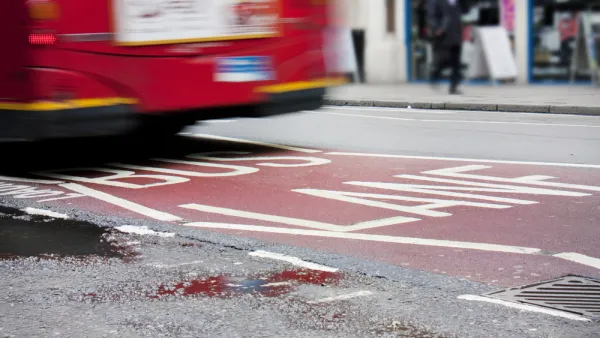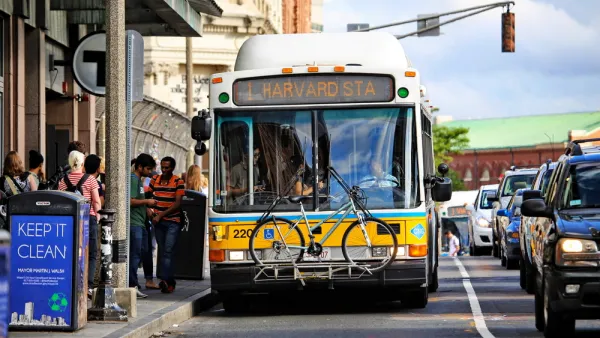Stephen Lee Davis investigates a campaign by Baton Rouge community groups to revive its bus service as it teetered on the brink of collapse.
Roughly a year ago, Baton Rouge's Capital Area Transit System (CATS) was faced with a fiscal crisis that threatened to shut it down altogether. But thanks to a coalition "of churches, faith-based groups, social workers, and university students and groups" dubbed Together Baton Rouge, citizens passed a ballot measure to raise taxes not only to keep the system alive, but to double its funding and give it a major facelift.
At the peak of CATS' financial woes, the mayor appointed a blue ribbon commission to see what could be done. Said commission chair Rev. Raymond Jetson: "Before there can be a robust transit system, before you can do novel things like light rail between Baton Rouge and New Orleans, and before you can have street cars from downtown to LSU, you have to have a backbone to the system. And that backbone is a quality bus system."
In part, the coalition built buy-in by promising specific improvements to the system that citizens could sink their teeth into. These promises were presented at every single public meeting:
- Decreased average wait times for buses from 75 minutes to 15 minutes.
- Eight new express and limited stop lines, serving the airport, universities, mall and other areas.
- GPS tracking on the entire fleet, with exact arrival times accessible on cellphones.
- New shelters, benches and signage at bus stops.
- Expanded service to high-demand areas and increased routes, from 19 to 37.
- Three new transfer centers operating in a grid system to replace the outdated route system that leads all buses back to Florida Boulevard.
- A foundation for Bus Rapid Transit, a system in which buses get their own right-of-way lanes.
Between Together BR, the blue ribbon commission, and the non-profit Center for Planning Excellence, community leaders were able to pursue extensive outreach, holding 120 outreach sessions in the four months leading up to the vote.
A reorganization of CATS' governance structure is waiting to pass through the state legislature, but the passage of the measure represents a major victory for transit and political mobilization in the area.
FULL STORY: Saving a transit system and turning the tide for the future of a mid-sized city

National Parks Layoffs Will Cause Communities to Lose Billions
Thousands of essential park workers were laid off this week, just before the busy spring break season.

Retro-silient?: America’s First “Eco-burb,” The Woodlands Turns 50
A master-planned community north of Houston offers lessons on green infrastructure and resilient design, but falls short of its founder’s lofty affordability and walkability goals.

Delivering for America Plan Will Downgrade Mail Service in at Least 49.5 Percent of Zip Codes
Republican and Democrat lawmakers criticize the plan for its disproportionate negative impact on rural communities.

Test News Post 1
This is a summary

Test News Headline 46
Test for the image on the front page.

Balancing Bombs and Butterflies: How the National Guard Protects a Rare Species
The National Guard at Fort Indiantown Gap uses GIS technology and land management strategies to balance military training with conservation efforts, ensuring the survival of the rare eastern regal fritillary butterfly.
Urban Design for Planners 1: Software Tools
This six-course series explores essential urban design concepts using open source software and equips planners with the tools they need to participate fully in the urban design process.
Planning for Universal Design
Learn the tools for implementing Universal Design in planning regulations.
EMC Planning Group, Inc.
Planetizen
Planetizen
Mpact (formerly Rail~Volution)
Great Falls Development Authority, Inc.
HUDs Office of Policy Development and Research
NYU Wagner Graduate School of Public Service





























